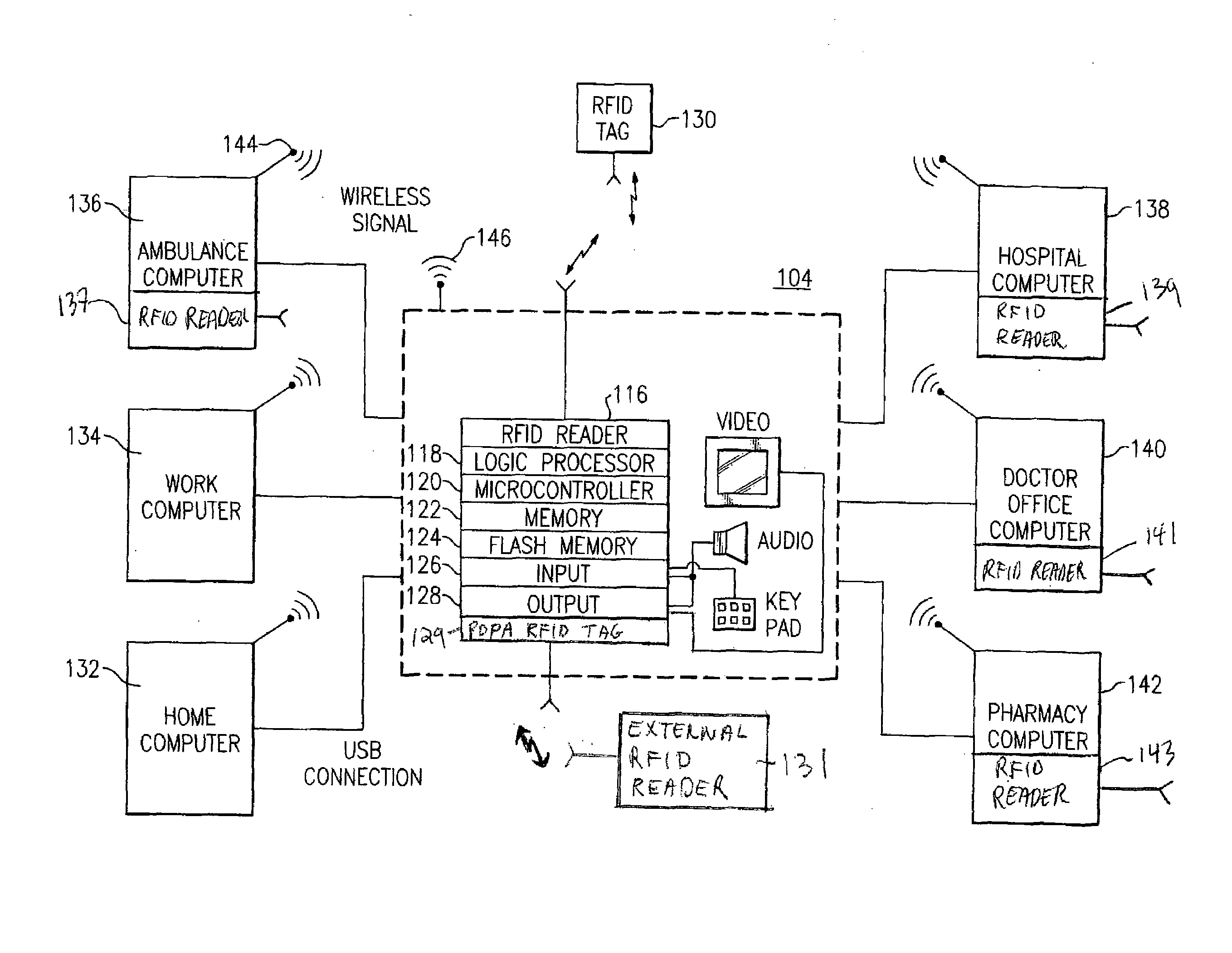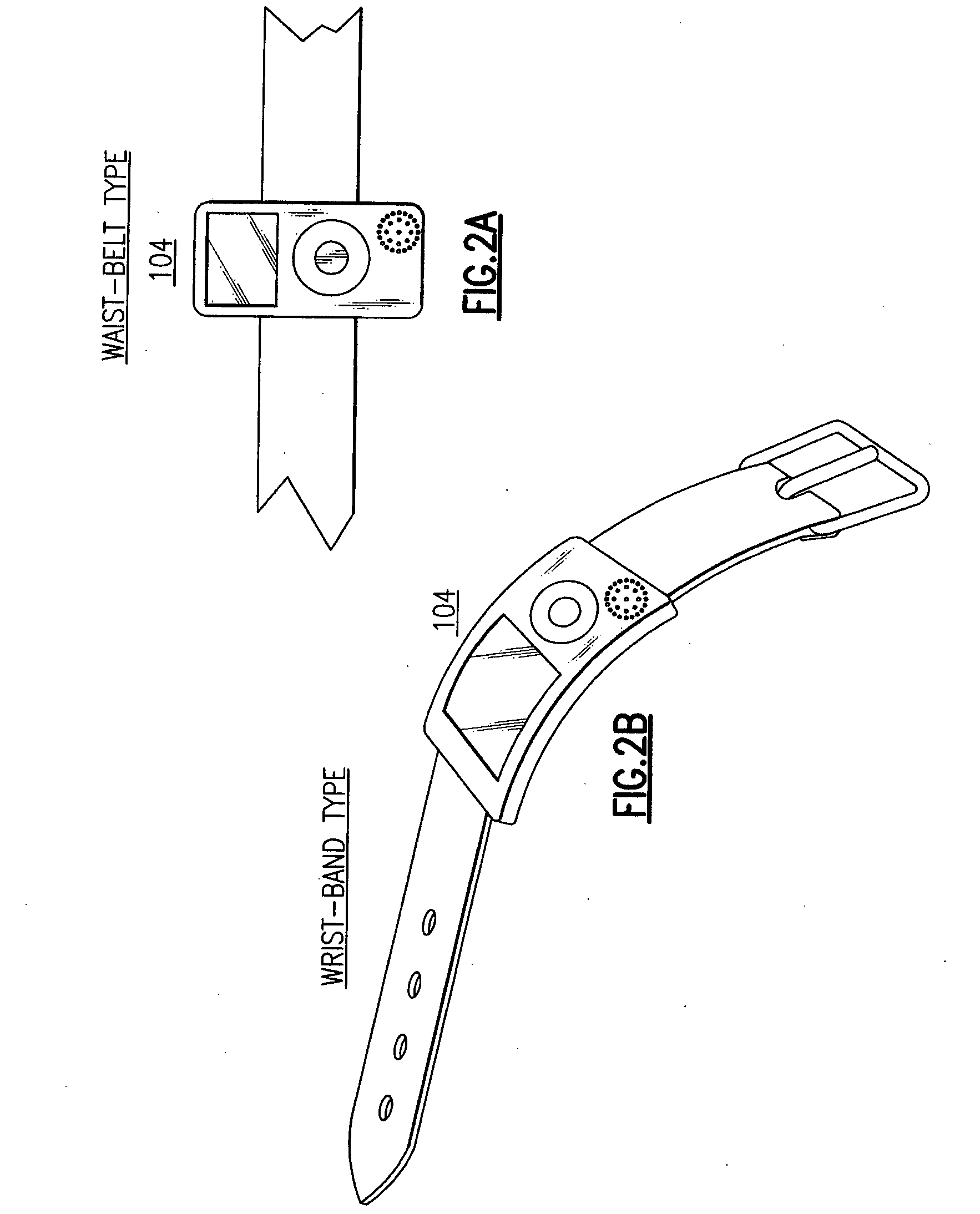Portable patient devices, systems, and methods for providing patient aid and preventing medical errors, for monitoring patient use of ingestible medications, and for preventing distribution of counterfeit drugs
a patient assistant and portable technology, applied in the direction of instruments, data processing applications, subscriber station connection selection arrangements, etc., can solve the problems of lack of information, types of errors, prescription errors, etc., and achieve the effect of preventing liver or kidney toxicity, being easily implemented and programmed
- Summary
- Abstract
- Description
- Claims
- Application Information
AI Technical Summary
Benefits of technology
Problems solved by technology
Method used
Image
Examples
Embodiment Construction
[0127]The present invention is directed to three principal aspects. The first includes the Portable Digital Patient Assistant (PDPA) which is employed, inter alia, to provide patient aid, maintain and update medical records, detect medical errors, and verify authenticity of ingested medications. The second principal aspect hereof is directed to methods and systems for patient use of ingestible medications which include certain features and attributes that engage with various embodiments of the present PDPA and RFID readers. And the third principal aspect hereof is directed to various counterfeit drug prevention techniques and technologies including some that also engage with different embodiments of the PDPA disclosed herein. Each of these three different principal aspects of the present invention includes several related and inter-related methods, systems, and apparatus including, inter alia, cooperative and interactive RFID readers and RFID tags. For the convenience of presentatio...
PUM
 Login to View More
Login to View More Abstract
Description
Claims
Application Information
 Login to View More
Login to View More - R&D
- Intellectual Property
- Life Sciences
- Materials
- Tech Scout
- Unparalleled Data Quality
- Higher Quality Content
- 60% Fewer Hallucinations
Browse by: Latest US Patents, China's latest patents, Technical Efficacy Thesaurus, Application Domain, Technology Topic, Popular Technical Reports.
© 2025 PatSnap. All rights reserved.Legal|Privacy policy|Modern Slavery Act Transparency Statement|Sitemap|About US| Contact US: help@patsnap.com



